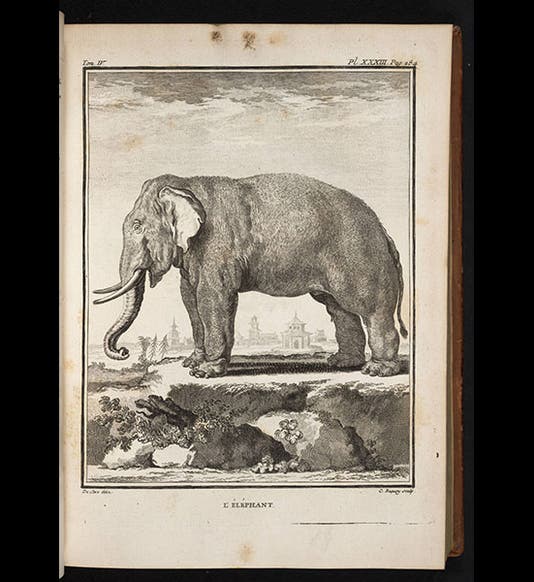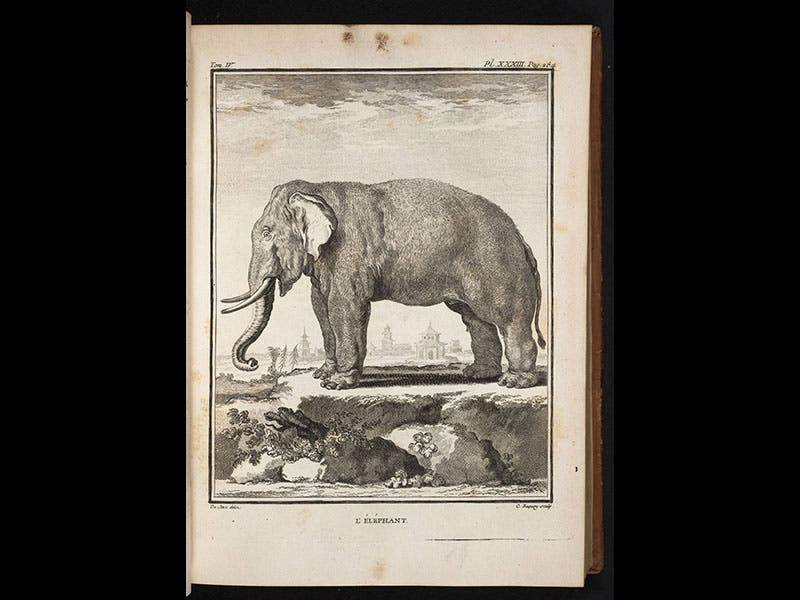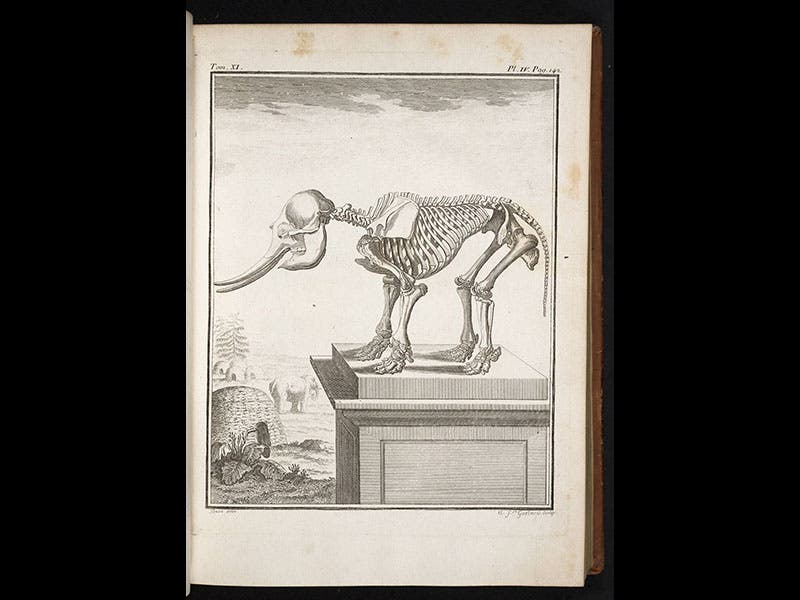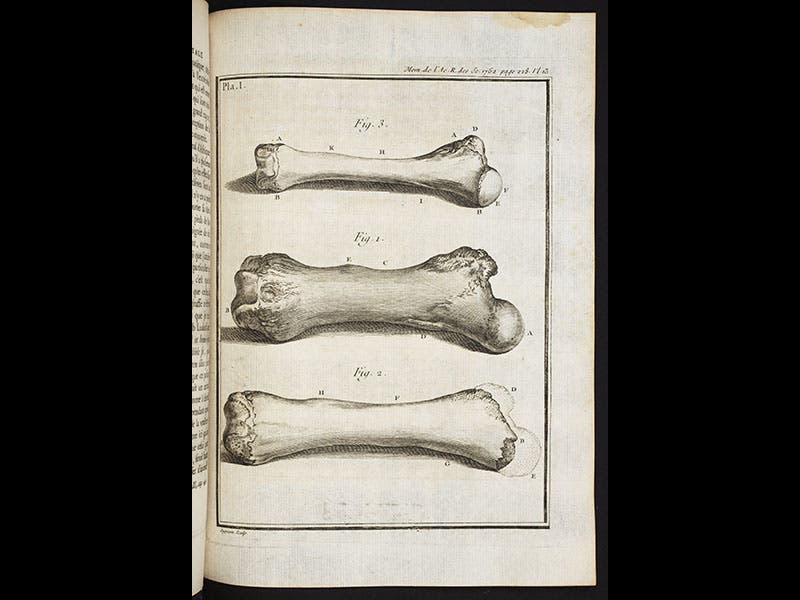Scientist of the Day - Louis-Jean-Marie Daubenton
Louis-Jean-Marie Daubenton, a French comparative anatomist, was born May 29, 1716. Daubenton came from Montbard, in eastern France, as did his countryman, Georges Buffon, the naturalist. In 1749, when Buffon launched what would become his 44-volume Histoire naturelle, he invited the younger Daubenton to contribute the sections on animal anatomy. This Daubenton did in earnest, and the first 15 volumes, on mammals, are enriched with hundreds of pages of text, and many figures, illustrating the anatomy of the animals that Buffon was discussing. The elephant and elephant skeleton from Daubenton’s “Description de l’Eléphant” in volume XI (1763) are shown above. And then, for reasons not clear, but probably involving jealousy, Buffon dismissed Daubenton and carried on alone. The remaining volumes, on birds, reptiles, and fish, have little anatomical content, and the work is poorer for it, as Buffon himself later admitted. Daubenton was unperturbed, and went on to a long and fulfilling career as a naturalist. Interestingly, Daubenton’s expertise in animal anatomy did not prepare him for the possibility of extinct species. When he had the opportunity to examine one of the first mastodon bones, a femur found along the Ohio River in America, he compared it with the thigh bone of an elephant and a Siberian mammoth, and decided that it did not represent a new species (see third image above). Thirty years later, George Cuvier would declare the mastodon to be a separate species, and thoroughly extinct. There is a statue of Daubenton in the Parc Buffon in Montbard (fourth image). Dr. William B. Ashworth, Jr., Consultant for the History of Science, Linda Hall Library and Associate Professor, Department of History, University of Missouri-Kansas City. Comments or corrections are welcome; please direct to ashworthw@umkc.edu.









